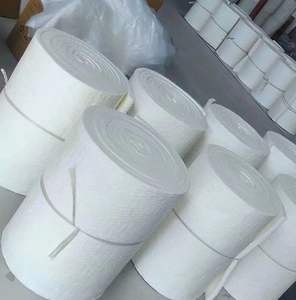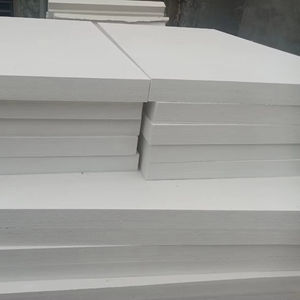Discover Premium Ceramic Products | Durability & Elegance United | Advanced Ceramics
1. Introduction
When it comes to handling molten metals, glass, or high-purity chemical reactions at extreme temperatures, not just any container will do. Enter the silicon carbide crucible—a workhorse in foundries, laboratories, and advanced ceramics manufacturing. But what sets it apart from other refractory materials? And how does it stack up against alternatives like silicon nitride or boron carbide?

In this deep dive, we’ll unpack the science, structure, and real-world performance of silicon carbide crucibles, while also exploring how this versatile material extends into other high-performance ceramics—from baking dishes to furnace tubes.
2. What Is a Silicon Carbide Crucible?
A silicon carbide crucible is a high-temperature container made primarily from silicon carbide (SiC), a compound known for its exceptional hardness, thermal conductivity, and resistance to thermal shock. These crucibles are engineered to withstand temperatures exceeding 1,600°C (2,912°F), making them ideal for melting non-ferrous metals like aluminum, copper, and zinc.
Unlike traditional clay-graphite crucibles, silicon carbide crucibles offer superior oxidation resistance and longer service life, especially in oxidizing atmospheres.
3. Types of Silicon Carbide Crucibles
Not all silicon carbide crucibles are created equal. The two main types are:
- Reaction-bonded silicon carbide (RBSiC): Made by infiltrating porous carbon preforms with molten silicon, resulting in a dense, strong structure with excellent thermal shock resistance.
- Sintered silicon carbide (SSiC): Produced by pressing and sintering high-purity SiC powder at high temperatures, yielding ultra-high purity and minimal porosity—ideal for semiconductor or lab applications.
RBSiC crucibles are often more cost-effective and widely used in foundries, while sintered versions are preferred where chemical purity is critical.

4. Silicon Carbide vs. Silicon Nitride vs. Boron Carbide
While silicon carbide dominates the crucible market, it’s worth comparing it to close competitors.
Boron carbide vs silicon carbide: Boron carbide (B4C) is harder and lighter but far more expensive and less thermally conductive. It’s rarely used for crucibles due to poor oxidation resistance above 500°C.
Silicon nitride, on the other hand, offers excellent thermal shock resistance and strength at high temperatures. However, silicon nitride crucible factories are fewer, and the material is generally more brittle and costly than SiC. That said, custom silicon nitride heat shields and silicon nitride rings are gaining traction in aerospace and semiconductor sectors.
For most industrial melting applications, silicon carbide strikes the best balance of cost, durability, and performance.
5. Beyond Crucibles: The Versatility of Silicon Carbide Ceramics
Silicon carbide’s utility extends far beyond crucibles. Its unique properties make it ideal for a surprising range of products:
- Kitchenware: From silicon carbide ceramic baking dishes and casserole dishes with lids to butter dishes with lids and dinner plates—both black and white variants—SiC ceramics offer unmatched thermal retention and oven-to-table elegance.
- Industrial components: Think silicon carbide burner nozzles, silicon carbide bricks for kiln linings, and silicon carbide ceramic columns for filtration systems.
- Plumbing and fluid handling: Silicon carbide ceramic pipes, tubes, and even disc taps leverage SiC’s wear and corrosion resistance. Silicon carbide thermocouple protection tubes and porous ceramic tubes are common in high-temp sensors.
- Decorative and functional items: Handcrafted ceramic plates, Christmas platters, ramekins, and salad bowls made from silicon carbide combine aesthetics with durability.

Even silicon carbide discs—used as grinding media, piezoelectric elements, or valve components—highlight the material’s adaptability.
6. Manufacturing Considerations and Purity
The performance of any silicon carbide product hinges on purity and microstructure. High-purity silicon carbide minimizes contamination during metal melting or crystal growth.
Similarly, the high purity silicon nitride powder market is growing, driven by demand for advanced ceramics in electronics and defense. But for crucibles, SiC remains more accessible and scalable.
Additives like mullite or zirconia can enhance specific properties—e.g., silicon carbide mullite tubes offer improved thermal cycling resistance—though they may reduce overall thermal conductivity.
7. Practical Applications and Industry Use Cases
Foundries rely on silicon carbide crucibles for consistent, efficient melting with minimal downtime. Labs use them for synthesizing high-purity compounds or growing crystals. Meanwhile, artists and chefs are discovering the benefits of silicon carbide ceramic oven dishes and baking trays that heat evenly and resist cracking.
In high-tech settings, RBSiC silicon carbide tile blocks protect furnace interiors, while silicon carbide ceramic tube insulators ensure electrical isolation at extreme temperatures.
8. Conclusion
The silicon carbide crucible stands out not just for its raw performance under fire—literally—but for its adaptability across industries. Whether you’re melting aluminum in a foundry, baking a casserole at home, or designing a thermocouple sheath for a jet engine, silicon carbide delivers reliability where other materials falter.
While alternatives like silicon nitride and boron carbide have niche advantages, silicon carbide remains the gold standard for high-temperature, high-wear applications—proving that sometimes, the toughest material is also the most versatile.
Our Website founded on October 17, 2012, is a high-tech enterprise committed to the research and development, production, processing, sales and technical services of ceramic relative materials such as What. Our products includes but not limited to Boron Carbide Ceramic Products, Boron Nitride Ceramic Products, Silicon Carbide Ceramic Products, Silicon Nitride Ceramic Products, Zirconium Dioxide Ceramic Products, etc. If you are interested, please feel free to contact us.
